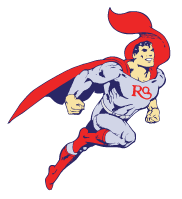Creating dynamic landscapes for your model train layout is an essential aspect of bringing your miniature world to life. By incorporating a variety of natural elements like rolling hills, rivers, trees, and tunnels, you can transform a simple train set into a vibrant, immersive environment. Whether you’re a beginner or an experienced hobbyist, it’s essential to know how to make your model train display more visually engaging and interactive. Below are a few tips on how to improve your layout with dynamic features.
Terrain Construction: Foam, Plywood, and Cardboard
When constructing terrain for your model train layout, selecting suitable materials is crucial to achieving the desired look and durability.
- Foam: Lightweight and easy to shape, foam is ideal for creating detailed hills, mountains, and other irregular terrain features.
- Plywood: Plywood provides a sturdy foundation for your layout. It’s typically used as the base layer due to its strength and stability, ensuring that your layout remains flat and secure.
- Cardboard: Cardboard is an economical and flexible material, often used to form basic terrain shapes, such as inclines or rough landforms.
Trees and Foliage: Using Wire Armatures and Flocking
Creating realistic trees and foliage for your model train layout can significantly enhance its overall appearance, adding a sense of scale and immersion. Two standard techniques involve using wire armatures and flocking.
- Wire Armatures: Wire armatures serve as the skeletons for your trees. By twisting and shaping wire, you can create the trunk and branches, giving each tree a unique and natural appearance. The flexibility of wire allows for customization of tree sizes and shapes, making it possible to replicate a variety of tree species from large oak trees to simple pine trees.
- Flocking: Flocking is used to simulate the leaves and foliage of trees. After preparing the wire armature, apply an adhesive to the branches and then sprinkle or press flocking material onto the tree. Flocking can also be used to ground areas to mimic grass, shrubs, and underbrush, adding further depth and realism to your landscape.
Water Features: Resin Pours and Acrylic Mediums
Incorporating water features like rivers, lakes, and ponds into your model train layout can dramatically enhance its realism and visual appeal. Two popular methods for creating these water effects are resin pours and acrylic mediums.
- Resin pours: Resin is a clear, durable material that can be poured into your layout to create realistic, glassy water surfaces. To use resin, you first need to prepare a sealed, watertight area where the water will be placed, such as a riverbed or pond. Resin can be tinted with dyes or paints to achieve the desired water color, and you can add details like rocks, aquatic plants, or even fish before pouring.
- Acrylic mediums: Acrylic mediums are typically applied in layers, allowing you to build up waves, ripples, or other surface details. They can be easily tinted and mixed to achieve different effects, and they remain slightly flexible after drying, making them ideal for adding fine details like whitecaps or foam.
Shop For Model Trains Online
The Charles Ro Supply Company is America’s largest model train supply store. Building model trains is often a family tradition or a favorite hobby for millions of Americans. If you are looking to shop for trains, please visit our online store or retail location in Malden MA.


